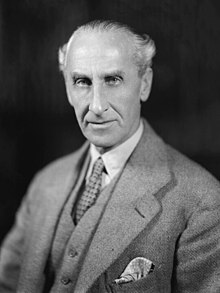The Earl of Lytton | |
|---|---|
 The Earl of Lytton, c. 1936 | |
| Governor of Bengal | |
| In office 1922–1927 | |
| Monarch | George V |
| Preceded by | Earl of Ronaldshay |
| Succeeded by | Sir Stanley Jackson |
| Personal details | |
| Born | 9 August 1876 Simla, British India |
| Died | 25 October 1947 (aged 71) |
| Nationality | British |
| Spouse |
Pamela Frances Audrey Chichele-Plowden
(m. 1902) |
| Children | 4 |
| Parent(s) | The 1st Earl of Lytton Edith Villiers |
| Relatives | The 2nd Baron Cobbold (grandson) The 6th Earl Erne (grandson) The 6th Baron Terrington (grandson) The 3rd Earl of Lytton (brother) |
| Residence | Knebworth House |
| Education | Eton College |
| Alma mater | Trinity College, Cambridge |
Victor Alexander George Robert Bulwer-Lytton, 2nd Earl of Lytton, KG, GCSI, GCIE, GCStJ, PC, DL (9 August 1876 – 25 October 1947), styled Viscount Knebworth from 1880 to 1891, was a British politician and colonial administrator. He served as Governor of Bengal between 1922 and 1927 and was briefly Acting Viceroy of India in 1926. He headed the Lytton Commission for the League of Nations in 1931–1932, producing the Lytton Report which condemned the Japanese invasion of Manchuria and denounced Manchukuo as a Japanese puppet state.